Well , at first glance most Pate A Choux ,[pronounced pat-e-shoe], formulas generally are of the the same basic structure. In class we had used this formula :
[#= lb.] {Bad Formula }
- 1 # water
- 1 # fresh milk
- 1 # butter
We made both éclairs & cream puffs with the same batch. The éclairs were very uneven in texture, with jagged edges, and not at all pleasing to the eye. As were the cream puffs - the oven spring was quite large . Unfortunately both the éclairs & cream puffs had to be browned very dark to achieve a cooked inside. They smelled very much like scrambled eggs.
Most of you probably wouldn't mind darker pastry, and in some European bakeries that is the standard. Americans are said to "like under baked pastry goods." That being said these were quite dark.
My instructor wasn't satisfied with the bake off and she even did a batch herself to rule out student error. The results were the same. So she converted a home formulation to production size. The results were beautiful - uniform texture, with a slight crunch, yet soft and wonderful insides. The smells reminiscent of some French haunt. These were a heavenly delight :
{best formula}
- 3 Cups water
- 1 1/2 Cups Butter
- 3 Cups flour
- 12 eggs
Place water and butter in a sauce pan, bring to a rolling boil. Add flour and stir to smooth paste. Continue to cook and stir for a minute or two.
Place flour mixture in a mixing bowl . Mix on 1st speed. Slowly add eggs and mix until incorporated. Mix on second speed until smooth and glossy.
Eggs Are added to the flour mixture
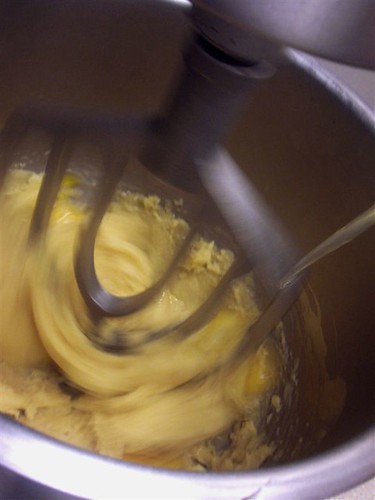 Mix until Incorporated
Mix until Incorporated
 Pate A Choux mixture smoothing out in 2nd speed
Pate A Choux mixture smoothing out in 2nd speed
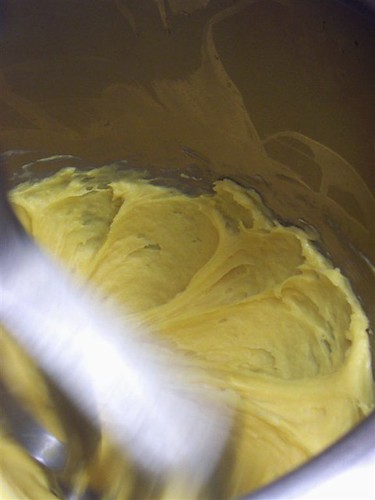 Pate A Choux mixture is smooth & glossy - ready to be shaped
Pate A Choux mixture is smooth & glossy - ready to be shaped
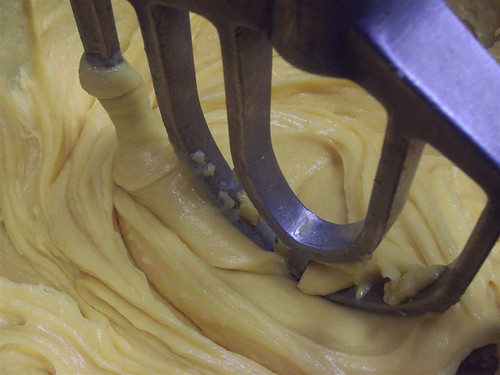
Pipe with pastry bag or scoop Pate A Choux onto parchment lined pans. Bake at 400° F for about 10 minutes Lower temperature to 350° F and finish baking until done. Shut off oven and allow Pate A Choux to sit in oven until dry.
Pate A Choux pipe into cream puffs
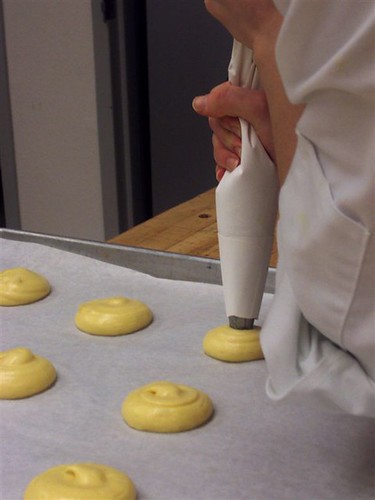 Pate A Choux piped into eclair shape
Pate A Choux piped into eclair shape
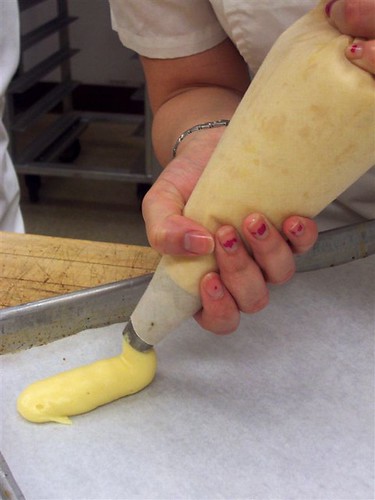 Eclair bake off
Eclair bake off
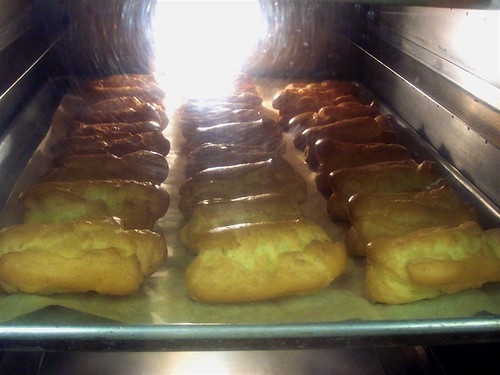 Eclairs are done when they are light, and can be touched without collapse. Do Not open oven until the eclairs/cream puffs are set ( baked enough not to collapse), or you will not have puffs no longer.
Eclairs are done when they are light, and can be touched without collapse. Do Not open oven until the eclairs/cream puffs are set ( baked enough not to collapse), or you will not have puffs no longer.
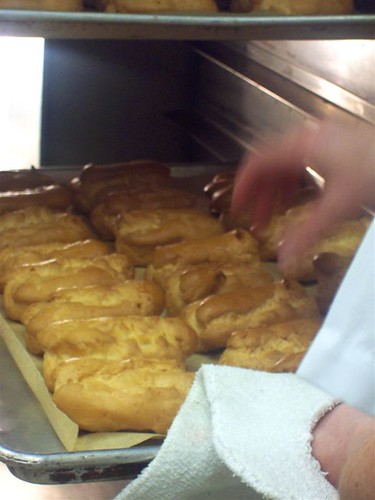
Once cool and dry, fill éclairs with pastry cream, dip in cooled ganache.
Éclairs filled with pastry cream, finished with ganache
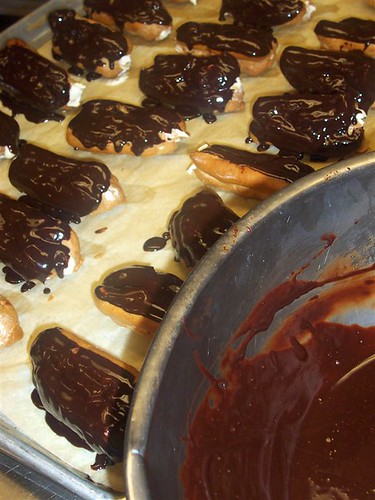 Cut cooled cream puffs {these were pictures from the 1st formula's batch a.k.a "bad formula"} at an angle. Trim out any webbing formed on inside which prevents insertion of filling. There should be a pocket formed.
Cut cooled cream puffs {these were pictures from the 1st formula's batch a.k.a "bad formula"} at an angle. Trim out any webbing formed on inside which prevents insertion of filling. There should be a pocket formed.
Fill the cream puffs with stabilized whipped cream or other filling. You can use a large pastry tip and fill the pocket, then make a large rosette, put tops back on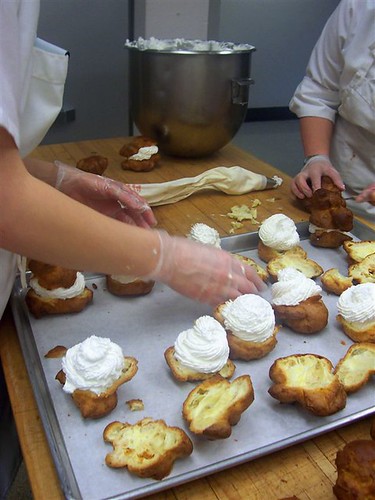
Finish with a dusting of powdered sugar
































